What's New
Displaying results 3031 - 3040 of 4922
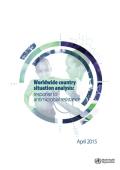
Resource | Publications,
A survey was conducted in countries in all six WHO regions and focused on the building blocks that are considered prerequisites to combat antimicrobial resistance: a comprehensive national plan, laboratory capacity to undertake surveillance for resistant microorganisms, access to safe, effective antimicrobial medicines, control of the misuse of these medicines, awareness and understanding among the general public and effective infection prevention and control programmes.
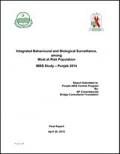
Resource | Publications,
This report provides mapping, and biological and behavioral information related to HIV infection among four most at risk populations: Injecting Drug Users (IDUs), Male Sex Workers (MSWs), Hijra Sex Workers (HSWs), and Female Sex Workers (FSWs).
The data presented here were collected during Punjab IBBS – Round 2014, conducted between June – November 2014. The IBBS was preceded by mapping among MARPs, across ten cities in Punjab. The cities included Lahore, Faisalabad, Multan, Sargodha, Gujranwala, Sialkot, Gujrat, Sheikhupura, Mandi Bahaudin, and Dera Ghazi Khan. The results from these mapping activities are presented in a separate report1. The mapping data provided sampling frames, diverse sampling techniques were used to draw representative samples of the MARPs from selected cities for IBBS.
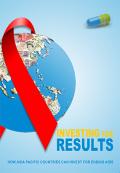
Resource | Publications,
This report examines the resource challenges that confront the AIDS response in Asia and the Pacific. It proposes a set of interventions that will help overcome them and steer the region towards ending its AIDS epidemic.
The report summarizes the analysis done by an independent, expert advisory panel on AIDS funding in Asia and the Pacific, convened jointly by UNAIDS and the World Bank in August 2013. The Expert Panel was tasked with reviewing the prospects for ending the region’s AIDS epidemic in the context of changing global economy and external funding environment.
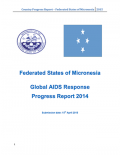
Resource | Publications,
This GARPR Report for 2014 demonstrates and summarizes the overall national efforts undertaken in development of relevant policies and progress in programme implementation and their contribution to the overall response to AIDS, as well as further underlying challenges that need to be addressed to halt the spread of HIV/AIDSin our country. This report also reflects the challenges in securing sustainable funding for prevention, treatment, care and support of HIV/AIDS by the Government due to the influence of the economic crisis.

Resource | Publications,
This document outlines the progress and achievements made towards the HIV response in the Cook Islands and highlight the on-going partnerships between civil society organizations and government.
The National Response primary focus is on prevention and ensuring that all pregnant women are tested for HIV, and ensuring access to ART. This aligns well with the Ministry of Health's mission statement "to provide accessible, affordable halt care and equitable health services of the highest quality, by and for all in order to improve the health status of people living in the Cook Islands".
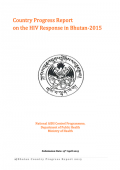
Resource | Publications,
The Global AIDS Response Progress Report (GARPR) 2015 was led by the National HIV/AIDS and STI Prevention and Control Programme (NACP) with technical support from the UNAIDS Country Office in Kathmandu, Nepal. The progress report presented here is based on the consolidated findings from the recently completed country exercise of preparing the Global Fund concept note; the national review, wider consultations and inputs from all the relevant stakeholders; from EDPs; People Living with HIV, and Civil Society Organizations in Bhutan.

Resource | Publications,
The Ministry of Health and Medical Services (MoHMS) through the Family Health Unit is carrying out a data verification process to confirm the number of patients of the cumulative figure that are living or have died. At the completion of this verification process, Fiji will be able to determine the number of HIV confirmed cases that are still living and how many had succumbed due to AIDS related illness or death of any kind.
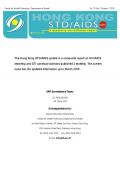
Resource | Publications,
The Hong Kong STD/AIDS update is a composite report on HIV/AIDS reporting and STI caseload statistics published 3 monthly. The current issue has the updated information up to March 2015.

Resource | Publications,
This survey estimated the prevalence of HIV and syphilis and associated risk behaviours among Female Sex Workers, Men who have Sex with Men, Intravenous Drug Users and Beach Boys. This survey captured several aspects of high-risk behaviours including unprotected sex, type of sexual partners, drug and alcohol use, and assessed the use of and access to health and social welfare programs among MARPs to identify means for increasing their coverage and uptake. A country like Sri Lanka where the HIV epidemic is of very low magnitude, there is a need for additional information about key populations at higher risk for HIV.
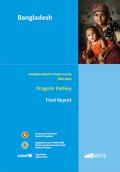
Resource | Publications,
The Multiple Indicator Cluster Survey (MICS) was carried out in 2012-2013 by Bangladesh Bureau of Statistics (BBS) in collaboration with UNICEF Bangladesh, as part of the global MICS programme. Technical and financial support was provided by the United Nations Children’s Fund (UNICEF).
The global MICS programme was developed by UNICEF in the 1990s as an international household survey programme to support countries in the collection of internationally comparable data on a wide range of indicators on the situation of children and women. MICS surveys measure key indicators that allow countries to generate data for use in policies and programmes, and to monitor progress towards the Millennium Development Goals (MDGs) and other internationally agreed upon commitments.





